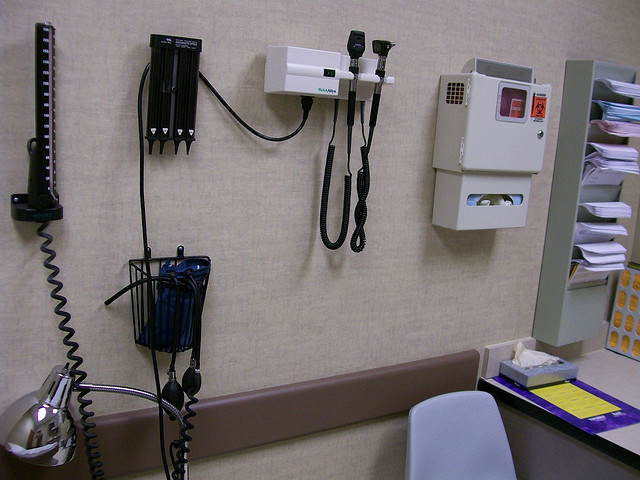If the unknown triggers anxiety, then a trip to the hearing specialist is particularly stressful. While almost all of us have experience with the family physician and the local dentist, the visit to the hearing specialist might be a first.
It sure would be nice to have someone describe the process upfront, wouldn’t it? Well, keep reading, because as you’ll discover, the process of getting your hearing examined is normally easy, comfortable, and pain-free — with aspects that can actually be fun.
So here’s how it will go:
After you arrive at the office, you will check in with a staff member at the front desk who will give you some forms to complete. Not long after filling in the forms, a hearing specialist will come with you into a room to get started with the hearing assessment, which consists of four parts:
Part 1: Case History

The hearing specialist will begin the process by getting to know you, your medical history, and your hearing loss symptoms. Preparing for this step is critical, because this is where you get to explain to the hearing specialist the specifics of your hearing loss, what you expect from treatment, and your unique hearing needs.
This part is all about you: what do you want to accomplish with greater hearing? Do you have the desire to play a music instrument again? Do you wish to be more active in work meetings? Do you want to be more involved at social gatherings? The more you can reveal to your hearing specialist the better.
Next comes the testing.
Part 2: Otoscopy
The initial diagnostic test to be carried out is termed an otoscopy. An otoscope is used to visually examine the ear canal and eardrum to find if your hearing loss is correlated to infections, earwax accumulation, or blockages. If the root cause of your hearing loss is something as basic as earwax accumulation, you could possibly start hearing better within a few minutes simply from expert earwax removal.
Part 3: Tympanometry
The following test is known as tympanometry, used to test the eardrum and middle ear. An instrument is inserted into the ear that will alter the air pressure, measuring how your ear reacts to a variety of pressures.
To understand this test, you have to first know that hearing loss falls into one of two general classes:
- Sensorineural hearing loss — this is the most prevalent hearing loss. It is also identified as noise-induced hearing loss and it involves destruction of the nerve cells of hearing.
- Conductive hearing loss — this hearing loss results from blockages or obstructions that limit sound conduction before the sound gets to the nerves of hearing.
Tympanometry is a test that can help to rule out conductive hearing loss, to make certain that there are no blockages, infections, or middle-ear-bone conditions. Conversely, Audiometry, which is outlined next, will quantify sensorineural hearing loss.
Part 4: Audiometry
The concluding group of tests will be performed in a soundproof room. These tests are collectively referred to as audiometry and will evaluate your hearing range and sensitivity. Audiometry is the best approach to calculate sensorineural hearing loss.
With the use of an audiometer, the hearing specialist will be ready to identify:
- Which frequencies you can hear well and which you have a tough time with.
- The minimum decibel levels, at differing frequencies, at which you perceive sound.
- The precise measurements associated with your hearing loss (as captured on an audiogram).
- Your capacity to comprehend speech, with or without background noise.
The test on its own, from your perspective, will be comfortable and uncomplicated. You will be presented with sounds and speech through headsets and will be instructed to demonstrate when you can hear the sounds by pressing a device or raising your hand.
Reviewing results and planning treatment
Shortly after the testing is finished, your hearing specialist will go over your results with you. If your hearing loss requires medical or surgical treatment (due to infections or middle-ear-bone problems, for instance), your hearing specialist can make the appropriate referral.
If your hearing loss can benefit from assistive listening devices or hearing aids, your hearing specialist will work with you to pick the best option for you, your budget, your lifestyle, and your cosmetic concerns.
Pretty painless for a lifetime of better hearing, isn’t it?
